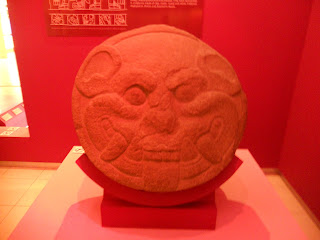Well I have now been officially home for a week and thought I should let you know how the readjustment was going. There have been many moments of using the wrong language to say thank you or please, much disorientation and confusion, and occasional loneliness. It is always so wonderful to come home to my family who I miss so very much when I'm in the field, but it is challenging too and very difficult to explain to someone who hasn't lived it. I think reverse culture-shock can be harder is some ways because people expect you to be your 'normal self' the moment you get back, maybe tired but normal- after all this is your normal environment. They ask how your trip was and there is nothing to say other than "great"... you can't explain or summarize what you have been through, seen, experienced, or felt. If you're anything like me you are still trying to first figure out where you are, what you are doing, and which language to use and second trying to process all that your just experienced.
The last time I returned home from the field my amazing wife had printed out a map of Target's layout and wrote in labels of where to find the things I need! She did this because of previous years when I was lost and overwhelmed in Target. It is tough to explain reverse culture shock but it is a feeling of confusion and being lost in your own home town. It really is a disorientation and I still find myself asking "What's wrong with me?" or telling myself to snap out of it. The reality is that it just takes time and can be a good opportunity to see some cultural differences.
This time was a bit less disorienting because it was only a month of fieldwork but I think I re-enter the culture in Central America more quickly each time I go into the field so there is still some reverse culture-shock. Last week I found myself driving a very familiar route a day after being home and getting momentarily lost. Loneliness is also very common for me when coming from Central American culture to the U.S. While I get to be with my family which makes me so happy, it is a cultural component that often makes me lonely. When in Joya de Ceren there are always people around when you walk outside your door, you overhear the conversations of other people (and the roosters and dogs and trucks and horns and car alarms) all day and all night, and there is a much different idea of privacy (which honestly can make me a bit crazy when in the field!). So upon returning home it feels lonely to only share my house with one other person and to not have neighbors and people to talk to at every moment of every day. It takes about a week or so for this to pass.
This year upon my return we had a previously scheduled camping trip with some of our friends. We were running the "Dirty Dash" and camped out with friends all weekend. This made for a much different re-entry experience, since camping is much like life in Joya de Ceren. You can hear conversations even when in your 'private space' and the majority of time is spent in shared areas. While getting home and turning around immediately to leave again was tough, it was really fun to get to share some time with my wife and friends and it made the re-entry a bit less lonely than usual.
 |
| My Team (I'm on the far right of this photo) |
 |
| Another Group Photo |
 |
| I think this should be our Christmas card this year |
 |
| My wife and I are waving to you from a rope obstacle |

















 (Huehueteotl- very old deity in Mesoamerica)
(Huehueteotl- very old deity in Mesoamerica)





























